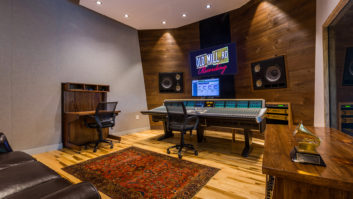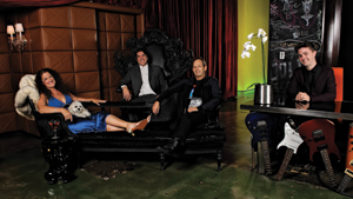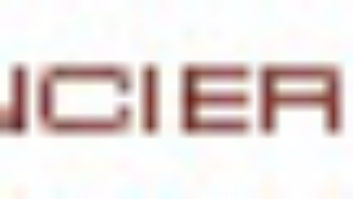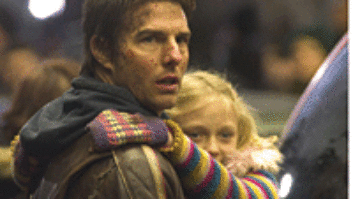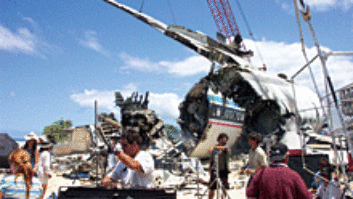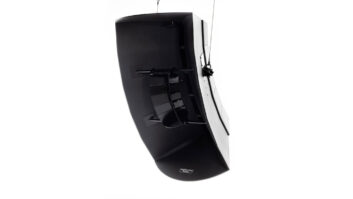“In 1974,” remembers Allen Sides, “I leased a garage on Ocean Way in Santa Monica Canyon, essentially as a hi-fi demo room to show off the tri-amplified theater speakers that I was building. I did limited live-to-2-track recordings as demo material for my speakers and sold a lot of systems to musicians and industry types using my demo tapes. By early 1977, I branched out and launched Ocean Way Recording Studios there. I installed the original Western Recorders Studio 1 tube console, an Ampex MM-1000 16-track recorder and began serious studio operations. This came about primarily because, during my speaker demos, people were often more interested in the recordings I was playing than the speakers. Before long, I had lots of clients wanting me to make their recordings sound like my demo tapes. So, in some ways, Ocean Way became a real recording studio by accident.”
Since those carefree days 25 years ago, Ocean Way Studios has grown intelligently and expansively; it is one of L.A.’s great recording success stories, thanks in large part to the vision and persistence of Sides. During the studio’s humble beginnings, he parlayed his fascination with, and knowledge of, old recording gear to equip his burgeoning studios — first buying equipment from Bill Putnam’s United Western Studios (Sides had been a runner at Western Recorders in ’69) and then going into business with Putnam, helping him sell his UREI equipment. The two of them then went on a buying spree, plucking equipment from some 30 bankrupt and closed-down studios, “which gave me an amazing opportunity to cherry-pick great stuff for my studios,” Sides says. He amassed his legendary mic collection in much the same way: Dan Alexander went mic-foraging all over Europe for Sides.
As Sides’ client list and equipment stock grew, he eventually moved his operation from Santa Monica to Hollywood, leasing and renovating Studio B in the United building on Sunset Boulevard and later taking on Studio A, as well. In his new digs, Sides attracted such diverse acts as Bette Midler, Kenny Loggins, Frank Zappa, and a host of jazzers, from Count Basie to Chick Corea to Sarah Vaughan. Studio A became one of the most popular string rooms in town. Within a couple of years, Ocean Way had taken over both the United and Western buildings, giving Sides the biggest recording complex in town. And he wasn’t done yet: In 1988, Sides bought and remodeled Record One in Sherman Oaks. Bonnie Raitt, Don Henley and Wilson Phillips were early clients there, and Quincy Jones and Michael Jackson kept Studio B busy for several years. These days, Studio A has an SSL 8000 G Series console; B has an SSL 9000 J.
Today, Ocean Way and Record One continue to draw top acts from every part of the music industry, from established titans such as U2, Elvis Costello, Tom Petty, Whitney Houston and the Rolling Stones, to young turks like Green Day, the Goo Goo Dolls, Beck, Alanis Morrisette, Eminem and No Doubt. Certainly, having the hot engineer/mixer Jack Joseph Puig ensconced for the past few years in Ocean Way Studio A — with its unique 72-input Focusrite board — has increased that room’s profile somewhat. But Sides, too, has continued to be an in-demand engineer and producer — where he finds the time to do that and keep his operation (which also includes a studio consulting business, equipment rentals and more) in smooth working order and technologically up to date is anybody’s guess.
“I can’t seem to help myself,” he says. “It’s a passion, and I’ve got it bad.”
